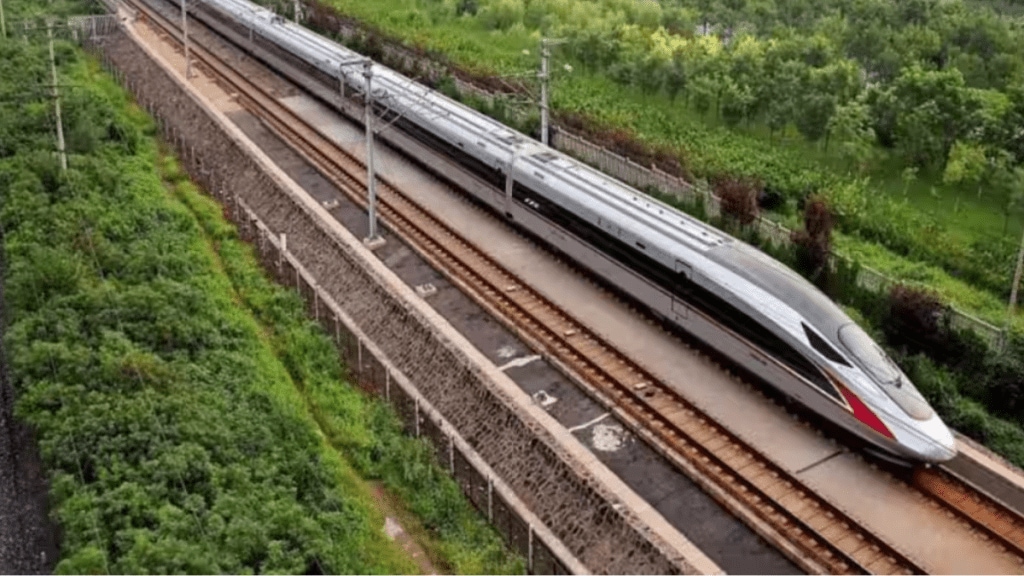India has achieved a historic engineering milestone in the Mumbai-Ahmedabad High-Speed Rail (HSR) project. A major breakthrough in the construction of a 4.8 km tunnel section was achieved, with excavation carried out simultaneously from the Ghansoli and Shilphata sides through challenging underwater terrain.
Tunnel Breakthrough Marks Historic Moment
The breakthrough moment came when the two teams successfully connected today, a remarkable engineering feat. The Railway Minister congratulated the project team, stating: “This is a landmark moment as we construct India’s first under-sea tunnel, connecting Mumbai and Thane through this challenging creek”.
The bullet train project will reduce travel time between Mumbai and Ahmedabad to just 2 hours and 7 minutes, integrating the economies of major commercial centers. Drawing parallels with Japan, where the world’s first bullet train created a multiplier effect on its economy, this corridor will unite Anand, Ahmedabad, Vadodara, Surat, Vapi, and Mumbai, fostering industrial growth, knowledge transfer, and economic integration. The Union Minister emphasized that the project will meet middle-class aspirations by offering comfortable travel with fares structured for affordability.
Project Progress and Cutting-Edge Innovations
The Mumbai-Ahmedabad HSR project continues to demonstrate remarkable progress: 320 km of viaduct has been completed, station construction is advancing rapidly, river bridges are being built systematically, and the Sabarmati tunnel is nearing completion. The project showcases significant technical innovations, including single tunnel technology for two bullet trains and the use of 40-meter girders in viaduct construction. Japanese partners have praised these innovations for efficiency and design excellence, and India has gained substantial technological knowledge through close collaboration with Japanese experts.
The Union Minister recently met a Japanese delegation led by the Vice Minister to review the project. Discussions included the introduction of the latest E10 Shinkansen trains in India. The operational plan includes trains every 30 minutes during peak hours initially, eventually increasing to every 10 minutes to meet growing demand. The first section, from Surat to Bilimora, is expected to be operational by 2027. Comprehensive training for loco pilots and maintenance staff is ongoing in Japan, using advanced simulators to maintain high safety and efficiency standards.
Engineering Excellence and Strategic Significance
The project employs the advanced New Austrian Tunnelling Method (NATM) with extensive safety measures, including ground settlement markers, piezometers, inclinometers, and strain gauges. Special emphasis has been laid on protecting nearby structures and marine ecology. This landmark corridor aligns with Prime Minister Modi’s vision of world-class infrastructure and is expected to serve as a model for future high-speed rail networks across India.
